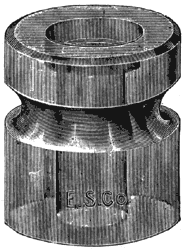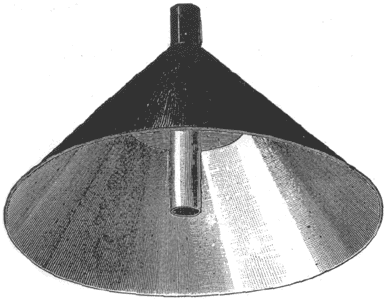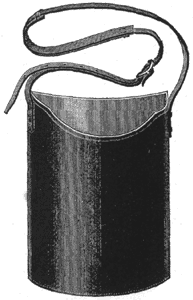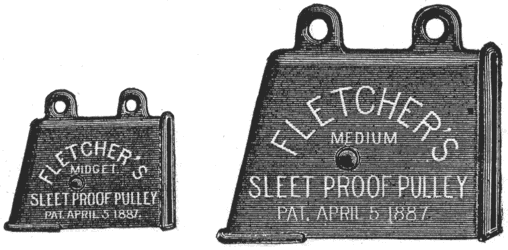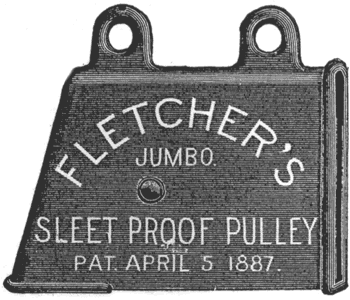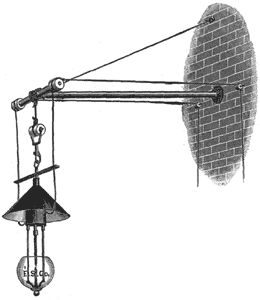Electrical Supply Company introduces a glass knob insulator
|
[Trade Journal] Publication: Western Electrician Chicago, IL, United States |
||||||||||||||
|
New Electrical Specialties.
The accompanying cuts illustrate a number of new electrical devices which have been introduced by the Electrical Supply company of Chicago. The general progress in electric lighting,
both arc and incandescent, has created a demand for new devices to fill new requirements, as well as reduce to a minimum the labor and inconvenience attendant upon the installation and maintenance of an electric light plant.
The Glass Insulating Knob, Fig. 1, possesses advantages which linemen will readily appreciate. Insulators which absorb moisture become worthless. This objection is overcome in the new device, which it is claimed loses none of its qualities, not even when considerably chipped or broken.
The general use of arc lights for outside purposes has created a demand for a sleet proof pulleys which will effectually prevent rain, snow or sleet from touching the pulley wheel or cable, and freezing sufficiently to make the wire stick and operate with difficulty at inopportune times. Fig. 2, 3 and 4 represent the Fletcher sleet proof pulley, which are especially adapted for out-door lights, when snow, hail or sleet storms prevail, although they are desirable under all circumstances, on account of the protection which they offer wire or cable. The "Jumbo" pulley is used for pulling up large arc lights into position after trimming, etc. The "Medium" pulley is designed for ordinary arc lights, while the "Midget" pulley is adapted to incandescent lamps that are used out of doors. Heretofore much trouble has been experienced in operating out of door lights which have been but imperfectly protected from rain, sleet or moisture. The new arc light hood, Fig. 5, is designed to obviate this trouble, as it thoroughly covers and protects the top of a lamp. It is so
constructed that the water runs off evenly and does not interfere with the operation of the lamp. Through the center of the hood is a stem which rests in the lamp and prevents the hood itself from being shaken or coming in contact with the wires and causing a short circuit. The stem also projects about three inches above the top of the hood, thus precluding the possibility of water leaking down into the lamp. There is a strong protection in the inside of the hood, which,
should it at any time be jostled from the lamp and thrown to the ground, will prevent any part from being dented or broken. The new Commercial lamp arm, Fig. 6, is designed for hanging arc lights from the sides of buildings at a convenient distance from the wall. The device is strong and ornamental, and designed to be adjusted to a brick wall by means
of long screws and an expansion bolt. The wall is first drilled and plugged, and the bolt expanded in the plug. This holds the lamp arm firmly, and becomes practically a part of the building.
Fig. 7 shows an arc lamp supported by the Commercial lamp arm, protected by the arc lamp hood, and hung by Fletcher's insulating lamp hanger. A neat design in linemen's carbon cases is shown in Fig. 8. These cases are made entirely of leather curved so as to conform to the shape of the body, and provided with a shoulder strap. They will hold enough carbons to last the trimmer a complete round on an ordinary trip.
|
